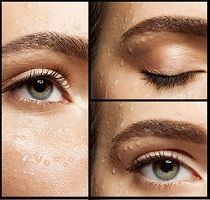Article
Aflibercept and Ranibizumab Produce Similar Improvement in Visual Acuity, According to Recent Study
Author(s):
A large observational study of results in routine clinical practice showed that visual acuity outcomes 12 months after Aflibercept or Ranibizumab treatment did not differ, and neither did the number of injections required for each agent.

To compare visual acuity outcomes of aflibercept (Eylea/Regeneron) with those of ranibizumab (Lucentis/Roche) for treating neovascular age-related macular degeneration (nAMD) in routine clinical practice, an Australian-based team did an observational study of 394 treatment-naïve eyes (of 372 patients) from the Fight Retinal Blindness outcome registry. These eyes began receiving aflibercept or ranibizumab treatment from December, 2013, through January, 2015, and treatment was given by a group of 34 practitioners.
Each treatment group included 197 eyes. At baseline, eyes were well matched between groups for age, size of the choroidal neovascular membrane, and visual acuity.
The team assessed each eye for change in mean visual acuity in terms of number of letters read on a logarithm of the minimum angle of resolution chart. They also assessed the number of injections and medical visits required for each eye and the proportion of eyes with inactive choroidal neovascularization during a 12-month period.
They found that, in the ranibizumab-treated group, mean visual acuity (VA) had increased by 3.7 letters (95% confidence interval [CI], 1.4—6.1) from baseline to 12 months after treatment, whereas in the aflibercept-treated group, it increased by 4.3 letters (CI, 2.0–6.5).
However, this difference in change in crude visual acuity of 0.6 letters between the two groups was not statistically significant (P = 0.76). Neither was the difference between the two groups in change in adjusted mean visual acuity (P = 0.26).
The investigators also reported that, for the eyes in which treatment was completed, no difference between the two groups was found in the mean number of injections (P = 0.27) or medical visits (P = 0.15). Completer eyes in both treatment groups received a mean of approximately 8 injections.
The investigators also found no significant difference between the two groups in the adjusted proportion of eyes with an inactive choroidal neovascular lesion during the 12-month study (Eylea, 74%, vs. Ranibizumab, 77%; P = 0.63).
These findings led the team to conclude that, in this large observational study of results in routine clinical practice, visual acuity outcomes 12 months after aflibercept or ranibizumab treatment did not differ, and neither did the frequency of treatment required for each agent.
Related Coverage:
In Neovascular Age-Related Macular Degeneration, Lucentis and Eylea Yield Similar Injection Burden





